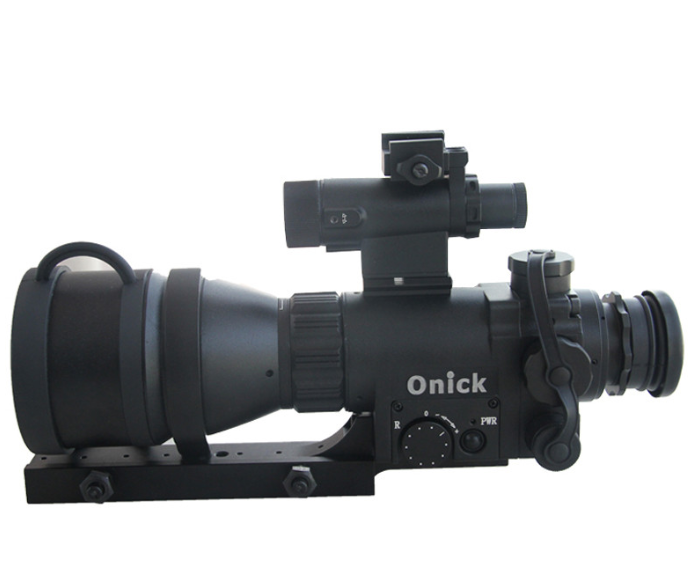Hunting infrared night vision scope is a high-tech optical device used in hunting activities. The following will introduce it in detail from the dimensions of working principle, main types, performance parameters, etc.:
Working principle:
Active infrared night vision principle: The scope emits an infrared beam to illuminate the target object. The infrared light reflected by the target is received by the scope, and then the infrared image is converted into a visible light image through the internal photoelectric conversion device, so that the user can clearly see the target at night. This method has clear imaging and is not limited by the ambient illumination. It can be observed even in total darkness.
Thermal imaging principle: Any object above absolute zero will radiate infrared rays, and the infrared radiation intensity of different objects and different temperatures varies. Thermal imaging scopes use this feature to detect and identify targets by detecting the difference in infrared radiation between the target and the background itself, which can enable people, animals, etc. to be clearly observed at night, and are not affected by obstacles such as smoke, fog and trees, and can work stably during the day and at night.
Main types:
Infrared night vision scope: The price is relatively low, the imaging effect is good, and it is suitable for most hunting scenes. However, its observation distance is limited, and because it needs to actively emit infrared light, there is a risk of high energy consumption and easy exposure of the position.
Thermal imaging scope: It can detect targets at a longer distance, and is not affected by bad weather and environment, and can clearly display the outline and position of the target. However, thermal imaging scopes are expensive, and their size and weight are relatively large.
Performance parameters:
Magnification: Common magnifications are 2.5 times, 3 times, 4 times, etc. The higher the magnification, the more details can be seen, but the field of view will be smaller accordingly, such as the magnification of the Yulan Ares 2.5x50 infrared night vision scope is 2.5X.
Objective lens diameter: Generally in millimeters, such as 50mm, 60mm, etc. The larger the diameter, the more light enters the scope, and the brighter and clearer the image.
Field of view: It determines the size of the range that can be seen through the scope. The larger the field of view, the wider the area that can be observed. For example, the field of view of the Onick CS-55 is 17 degrees.
Resolution: measured in line pairs/millimeter (lp/mm). The higher the value, the clearer the image and the richer the details. For example, the resolution of the Yulan Ares 2.5x50 infrared night vision scope is 36 line pairs/mm.
Operating temperature range: The operating temperature range of general hunting infrared night vision scopes is between -30℃ and +40℃, but it varies from product to product.

Recommended products
Onick: The CS-55 night vision scope is a compact, high-performance first-generation plus scope with a high-end red cross reticle, high magnification, long-distance observation and other features. It uses a standard Picatinny rail and has a wide range of applications.


